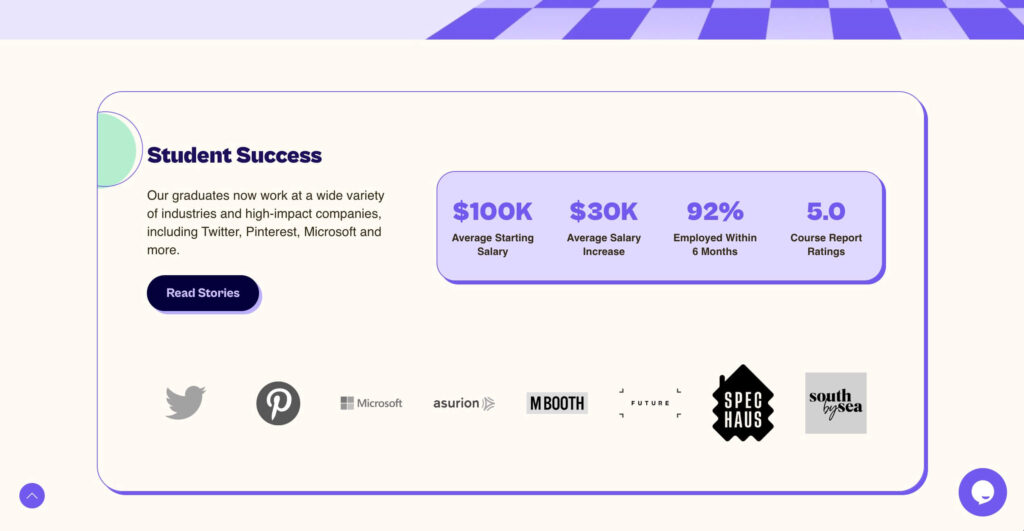In the ever-evolving landscape of digital experiences, aspiring designers ponder whether transitioning into the UI/UX design field is a promising endeavor. This article delves into the challenges, potential impact of artificial intelligence (AI), and strategies for competing effectively against more experienced candidates.
Get into UI/UX Design in an Competitive Job Market
The UI/UX design arena presents both opportunities and challenges. With the increasing recognition of user-centered design, competition for roles has grown fiercer. To succeed in transitioning into UI/UX design, a structured approach is key. But before delving into strategies, let’s address some common concerns.
Get into UI/UX Design in an Over-Saturated Market with Looming Threats from AI
One prevalent concern is the perceived saturation of the UI/UX job market. For years, LinkedIn influencers, Youtubers, people on Facebook, Discord or Slack groups have been lamenting how over saturated the job market for UI/UX design is. During the pandemic, there was a huge influx of career changers drawn by the appeal of well-paying and engaging UI/UX design roles. While the market may seem saturated, it’s a testament to the field’s desirability. Just as popular tourist destinations remain crowded due to their allure, a thriving job market attracts talent.
Additionally, the rise of AI has raised apprehensions about job security. However, the uniqueness of UI/UX design ensures it won’t be easily replaced by AI. The irreplaceable aspects include:
1. Human Creativity and Empathy
UI/UX design necessitates human creativity and empathy. Understanding user emotions and needs sets human designers apart, fostering emotional connections and personalized experiences.
2. Contextual Understanding
Effective UI/UX design hinges on understanding cultural and emotional contexts. Human designers excel in comprehending nuances that AI struggles to capture.
3. Iterative Design Process
Human designers excel in the iterative design process, leveraging intuitive leaps and creative pivots. AI algorithms follow predefined patterns, limiting their adaptability.
4. Ethical Considerations
AI lacks human ethical discernment in design choices. UI/UX designers consider inclusivity, accessibility, and privacy, demonstrating human judgment.
5. Aesthetic Sensibility
Aesthetic judgment, vital in UI/UX design, combines functionality and visual appeal. AI lacks the subjective understanding of aesthetics.
6. Innovation and Problem-Solving
Human designers introduce innovation and unconventional solutions, challenging norms. AI relies on established patterns and data.
7. Collaboration and Communication
Collaboration with stakeholders demands human communication skills. UI/UX designers navigate negotiations and compromises, integral to project success.
8. Rapid Adaptation to Trends
The dynamic design landscape requires adaptability. Human designers seamlessly incorporate new trends and technologies.
9. Emotional Design
UI/UX designers elicit emotional responses, fostering user loyalty. AI struggles to replicate emotional connections.
10. Intuitive Problem-Solving
Designers tackle multifaceted problems using intuition and experience. AI lacks this innate problem-solving ability.
How to Get into UI/UX Design Competing with More Experienced Designers
Most aspiring designers understand that having an outstanding portfolio through studying in a formal UI/UX education program under the guidance of experienced instructors and working on real industry projects through a portfolio building program is the minimum in getting considered for any design jobs, but what about other candidates who have a leg up in other areas, say way more work experience in this field because they started earlier?
There is no doubt that the job market has never been in favor of anyone without experience, in any industry. The battle between “we want experience” but “nobody wants to give me a chance to gain that experience” is as old as the inception of labor.
While it’s certainly necessary for industry leaders to advocate for a change in hiring culture, we can’t expect it to happen overnight. If we can’t change something, we must beat it and make our way through it. So how can a career changer who transitioned to UI/UX design from other fields win in this uphill battle?
The answer is finding the right fit.
Have you ever come across someone whose skillset isn’t as good as yours, objectively speaking, but they have a job? This happens quite often and is never an isolated incident. The reason is often very simple – they found the right fit in the job market.
Competing with experienced candidates is feasible through strategic approaches:
1. Explore Companies with Flexible Hiring Policies
Target smaller companies with flexible hiring policies. Smaller firms are often more open to candidates without extensive experience.
2. Emphasize Skill Sets in Job Descriptions
Apply to roles emphasizing skills over experience. Look for descriptions focusing on abilities rather than years of practice.
3. Network and Gain Referrals
Network to gain referrals, giving you an edge over other candidates. Attend events, engage on social media, and seek advice from professionals.
4. Consider Smaller Companies
Smaller companies provide more opportunities for candidates without extensive experience. Their flexibility and reduced competition can be advantageous.
Portfolio Power: Overcoming the 4-Year Degree Myth
A 4-year degree in design sounds impressive, for sure, and expensive. If we do not possess this fancy degree like some of our competitors in the job search process, do we immediately lose out?
Not if you are good, and better than those with the fancy degrees.
Fortunately, in this field, a great portfolio speaks louder than a piece of paper like a degree. The reason a degree holds weight is because the collective trust society puts into higher education, which supposedly should deliver high quality education.
However, time has changed. While the gatekeeping nature of higher education has kept many talented people away from the door of opportunities before, it is becoming less and less the case in many industries and UI/UX design is one of them. Well-run education programs outside of higher education can be just as good, if not better, than a 4-year degree.
The reasons are:
- Higher education requires “foundation classes” that are irrelevant to your area of study such as philosophy, literature etc. That takes away valuable time to train for job skills. Good career education, on the other hand, gets straight to the point from Day 1.
- Higher education often emphasizes theory way more than practical scenarios simply because the lengthy nature of the program allows quite a bit of free time for schools to allocate. What do they do? They spend way too much time focusing on theories. Good career education balances the time between theory and practice, often connecting students with real companies to work on projects.
- Higher education creates debt for students. While there are relative more affordable higher education options, such as state colleges in the United States or in countries where higher education is subsidized by the government, many students end up with high amount of debt and longer waiting period reaching their goals. From the perspective of return on investment (ROI), it’s the poorest of poor.
Thanks to the relative open-mindedness of the design industry, career changers can confidently create competitive advantage by getting really good at their crafts and demonstrate it through an outstanding portfolio.
A 4-year degree isn’t the sole determinant of success. A compelling portfolio speaks louder than a degree. Modern career education programs offer valuable alternatives, focusing on practical skills and real-world projects. Leveraging these avenues can level the playing field.
Conclusion: Get Into UI/UX Design and Thrive
Transitioning into UI/UX design is indeed a wise move, but success hinges on strategy. The UI/UX landscape remains rich with opportunities, provided aspiring designers are armed with skills, resilience, adaptability, and a commitment to lifelong learning. Embrace the challenges, embrace your uniqueness, and thrive in the dynamic world of UI/UX design.





